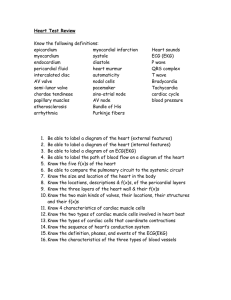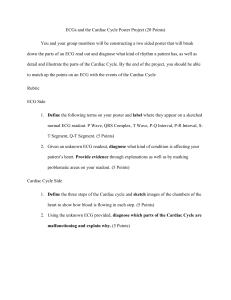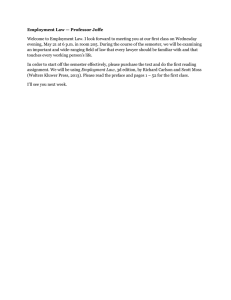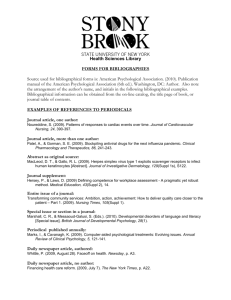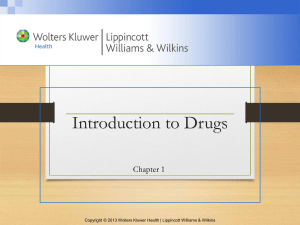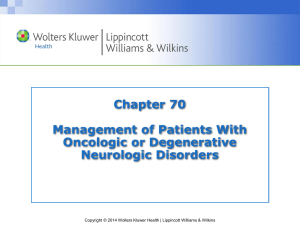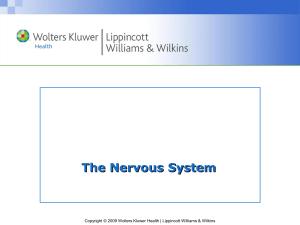Cardiovascular System: Exercise & Nutrition Science Presentation
advertisement
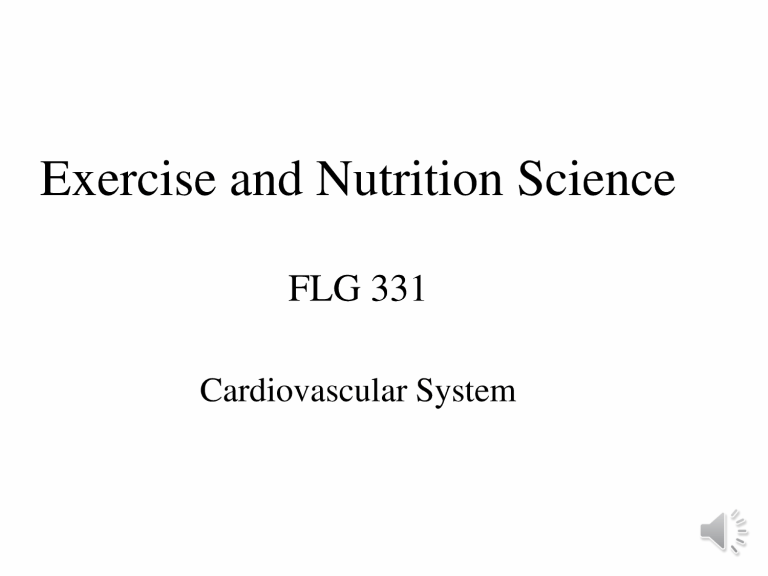
Exercise and Nutrition Science FLG 331 Cardiovascular System Wolters Kluwer peatch Cardiovascular System Lippincott Williams & Wilkins Components e Consists of four components 1. A pump that provides continuous the other three components 2. A high-pressure distribution circuit 3. Exchange vessels 4. A low-pressure collection and linkage with return circuit 3. Managing stress’ Copyright © 2015 Wolters Kluwer Health | Lippincott Williams & Wilkins \ ~ Pulmonary Circuit Pulmonary arteries Pulmonary veins ss ee Oxy gen-poor, CO,-rich blood Oxyger-rich, CO.-poor blood Ri. atriuin Ri. ventricle oVSTEMIC ¥EINS | Systemic Circuit SYSTEMIC arteries INTRINSIC CONDUCTION SYSTEM Tay aL eGo esCMa CEM PLE CLLEELE Marcelteaatelelm daleeacslae “ a Beni See The intrinsic conduction system sets Hated ects ua Miele Mua datemelcelutaemacae RCO RO Tee MUN ReTCe Ee Wal Reet lec om Teemeltiealereice INTRINSIC CONDUCTION SYSTEM SA NODE Mass of autorhythmic cells located in the right atrial wall near entrance of the sup vena cava (SA — sinoatrial); generates impulses about 75 times per minute, sets pace for the entire heart (pacemaker) INTERNODAL PATHWAY Pathway that carries impulses from SA inode to the AV node AV NODE Mass of autorhythmic cells located in the inferior ppttion of the interatrial septum above the tricuspid valve (AV = atrioventricular); here, each impulse is delayed briefly, allowing atria to contract before ventricles AV BUNDLE Autorhythmic celis located in the inferior patt of the interatrial septum; the only electrical cotitieotion between the artia and ventricles (AV = atriovetitrictlar); also known as the bundle of His. BUNDLE BRANCHES Two branches resulting from splitting of the AV bundle; conveys impulses down the interventricular septum. PURKINJE FIBERS Fibers that rut thtough the interventricular septum, penetrate the heart apex; thefi tufm superiorly, conveying impulses throughout the ventricles. . OF DEPOLARIZATION a ee ee PATHWAY which spread trom the of the intrinsic conduction system to the are electrical events. Subsequent contraction ofthe contractile cells is a mechanical event that causes 4 heartbeat. Sy NORMAL ECG WAVE TRACING Piwave = Atrial depolarization GIRS complex = Ventricular depolarization Tiwave = Ventricular repolarization Diagnostic Use of the ECG « ECG abnormalities may indicate coronary heart disease —ST-segment depression can indicate myocardial ischemia Fig 9.8 Abnormal ECG Normal ischemia Fig 6 | ey > Wolters Kluwer | Lippincott oo Distribution of Sympathetic and Parasympathetic Nerve Fibers Within the Myocardium HL Parasympathetic nerves Sympathetic nerves Sympathetic chain Copyright © 2015 Wolters Kluwer Health | Lippincott Williams & Wilkins Williams & Wilkins CARDIAC OUTPUT Cardiac output is the amount of blood pumped out by each ventricle in one minute. Cardiac output can increase Nery Cel bm Cee oo mda tems nE rates we put on our body, whether dashing to catch a bus or riding a mountain bike. CARDIAC OUTPUT Cardiac outputis the amount of blood purniped out by each ventricle in one minute. Cardiac autputis directly related to heart rate and stroke volurne: Cardiac Output = HearRate CO = HR x Stroke Volume x oy

